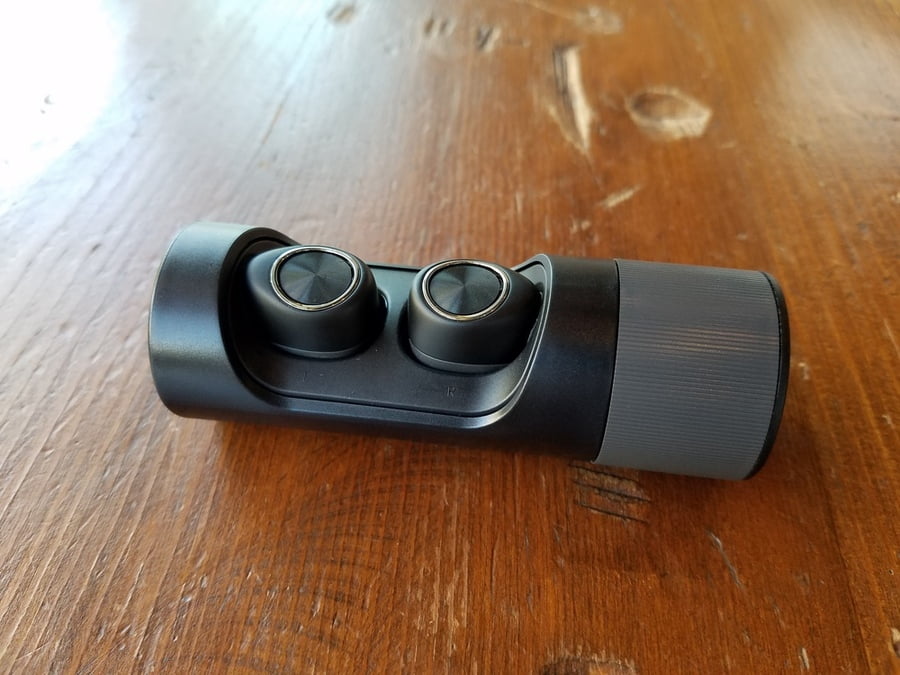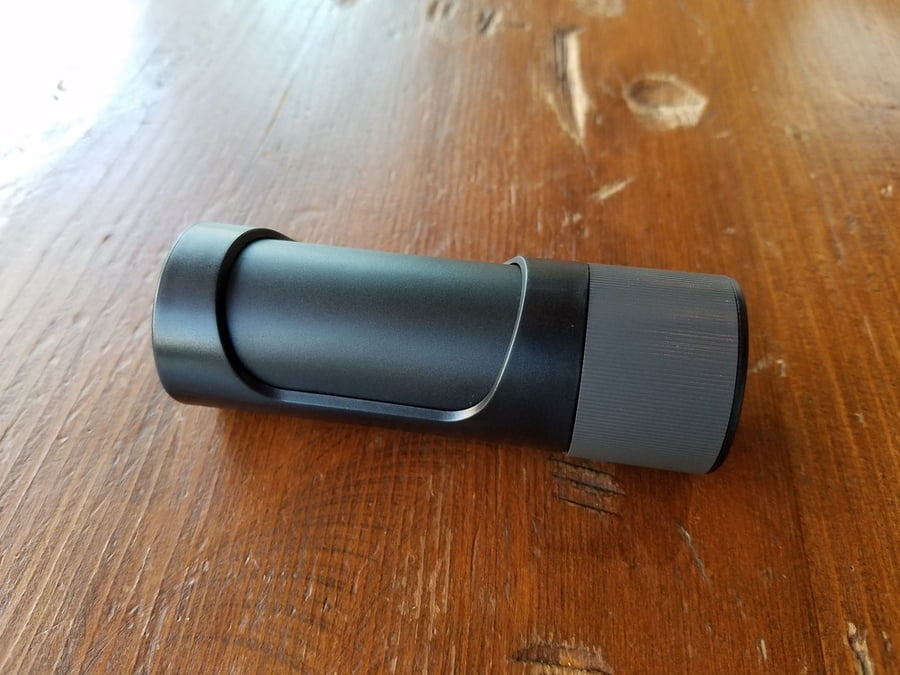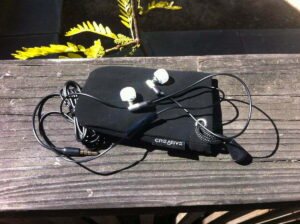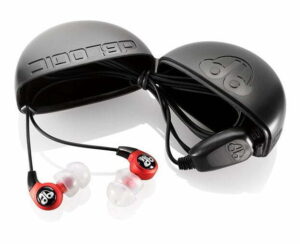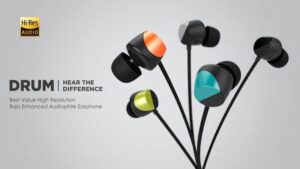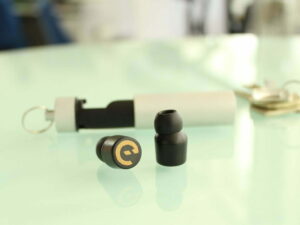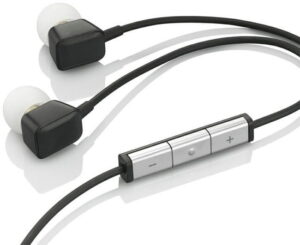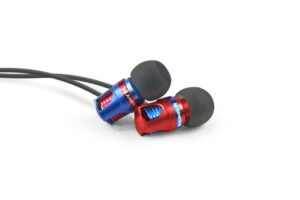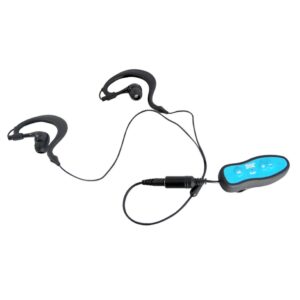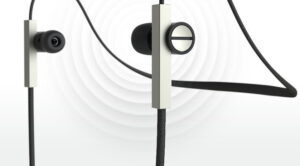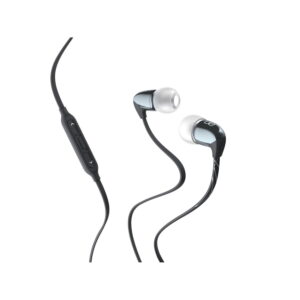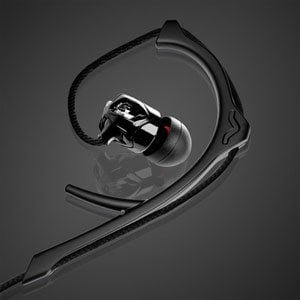The Bluetooth wireless movement for earbuds was not without a bit of contention. If they still have a cable, albeit not having to attach to a mobile device, are they really wireless? Fortunately, some manufacturers also asked the same question, and they were hot on the heels to deliver a truly wireless earbud (no wire, whatsoever). If you haven’t, read our Most Important Features before buying headphones. Or, compare with another option in our Wang Bud Earbuds by Fanny Wang review. Or better still, read our review of the best earbuds.
Years ago, the Bragi Dash was the first imagining of a completely wireless earbud device, but fast forward to today and there are other key players, including Earin, who don’t want to miss out on the fun. Many consumers probably don’t know that Motorola is now part of the action. As are other companies with great headphones, like the Sennheiser Momentum in-ear wireless, RHA T20 in-ear headphones, and JayBird X2.
Motorola’s new earbud is called the VerveOnes and we’re reviewing them for you today.
Overview
Price: $199 on Amazon
Available: July 2016
Model: Motorola VerveOne/SH001
Summary: The Motorola VerveOnes is nowhere near perfect, but it does a couple of things very right. The carrying case looks and works great, and the earbud ergonomics are spot-on. We just wish that the audio delivery was more refined, like the Tenqa Fit Bluetooth headphone.
What We Liked
- Well-thought-out carrying case, which doubles as a battery pack
- Easy to use
- Snug and secure fit, even while working out
What We Didn’t
- They’re fairly large
- Right earpiece would sometimes cut off
- Audible hiss is present
- Audio quality leaves to be desired
VerveOnes Specs
| Frequency Range | Unknown |
| Impedance | Unknown |
| Bluetooth Standard | Version 4.1 |
| Bluetooth Range | 33 feet |
| Battery Life | 3 hours of playback (12 hours total with periodic charging from case’s battery) |
| Weight | 68 grams |
| Rechargeable Battery | |
| Carrying Case | |
| Eartip Sizes | S, M, L (single and double flange) |
| Price | $199 |
Design
Unlike the Sennheiser Momentum Wireless headphones, there’s not a lot to the VerveOnes earbuds. That’s the point, after all, to minimize how much you have to carry around to get your tunes. However, because all you get are earpieces, handling needs some extra thought. Motorola’s solution is a snazzy cylindrical capsule that greets you upon opening the packaging.
There’s nothing spectacular about the hard plastic build, but it’s obvious that the case’s appeal is in simplicity and efficiency. As I saw the earpieces lay nicely nestled in their dedicated pockets, I questioned, “What’s to keep them from falling out?” I then quickly noticed that the ridged part of the case is actually a twist-able knob. When you turn it, the inner plastic rotates and the earpieces become hidden within the unit. Great idea, Motorola.
Related: Also check out our Nuforce Ne-700X Earbud review.
You hear a satisfying click when they’re 180 degrees around, which means that there’s a little bit of force opposing rotation (to help against inadvertently opening the case and potentially losing the earbuds). My only complaint is that there’s no clearance between the case’s housing and the top of the earpieces when they go under, resulting in a plastic-to-plastic rubbing that may cause chaffing over time.
You’d be correct to expect the earpieces to be a little on the large side. Much like the Panasonic open-ear bone conduction headphones are. After all, everything is packed into them (Bluetooth radio, sensors, battery, etc.). Design-wise, Motorola also aims for simplicity/effortlessness here. The earpieces are essentially fat, oval capsules, split between hard plastic on the outer half and a rubbery, silicone-like material on the inner half. There’s a distinct button on the outer surface, which is garnished with a silver ring.
Related: If you like these earbuds, you might be interested in our JVC Ha-Ncx78 Multi Noise Canceling Earbuds review.
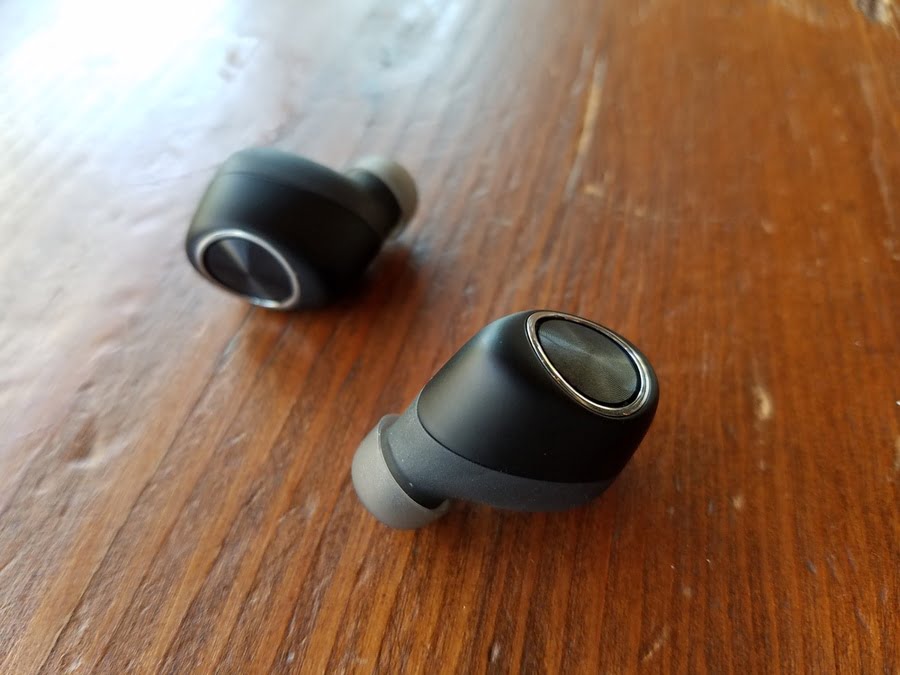
Rather than have their MicroUSB port for charging, the earpieces charge through the case. A set of five connector contacts on the belly of the earpieces line up with pins within their slots in the case. The shape of the slots doesn’t allow you to orient them incorrectly, and you get a satisfying snap when you push them in.
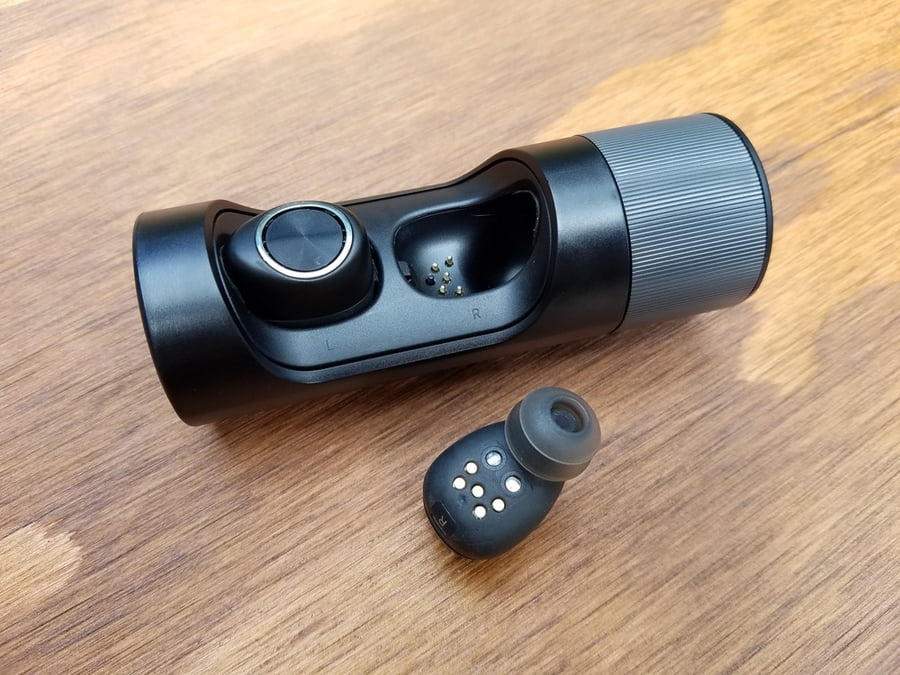
Function
I was surprised at how short the ear nozzles are on the VerveOnes. The stock ear tips are also short. I immediately knew that I wouldn’t get an appropriate seal out of the box. And earphone users know, that the seal is of the utmost importance. Fortunately, Motorola not only includes differently sized ear tips in the packaging, but double-flange ones too. These extend further and gave me a sufficient seal.
As suggested earlier, expect that the large earpieces stick out of the ear somewhat. Thankfully, the fit is snug and the earpieces stay in place. This is largely due to how lightweight they are. Part of the appeal of completely wireless earbuds is the convenience for workouts, and the VerveOnes can take it on without falling out.
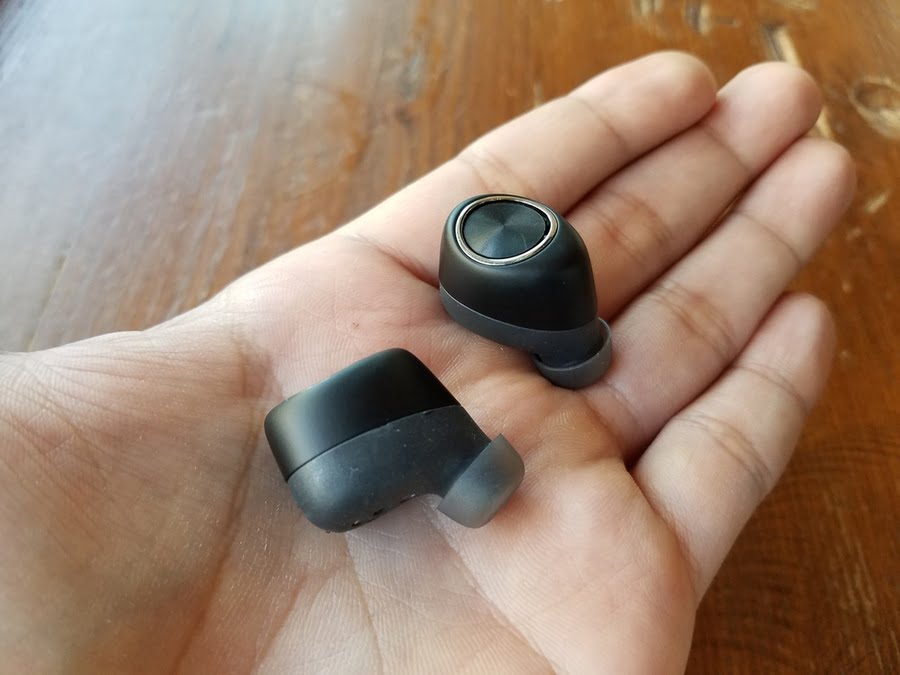
It’s reasonable to expect somewhat of a learning curve to get started with an earbud that just has a single button. Motorola of course packs multiple functions into it. But getting up and running is actually as simple as it can be. The earbuds know when you remove them from their silos and place them within your ears; they start up right away. In the first use, you’re greeted by a voice that tells you to pair them with your mobile device, and viola.
However, the playback controls are a different story. You’ll need to read the manual for that part. It’s important to note that the VerveOnes don’t utilize a touch sensor, like on the Bragi Dash, for instance. Control is only through button presses. Therefore, you won’t get as many functions or intuitive controls (like swiping up or down to adjust the volume). It’s interesting that although both earpieces have their own button, they both do the same thing. In contrast, the Bragi Dash puts different controls on each earpiece. Motorola’s priority may have been that of simplicity.
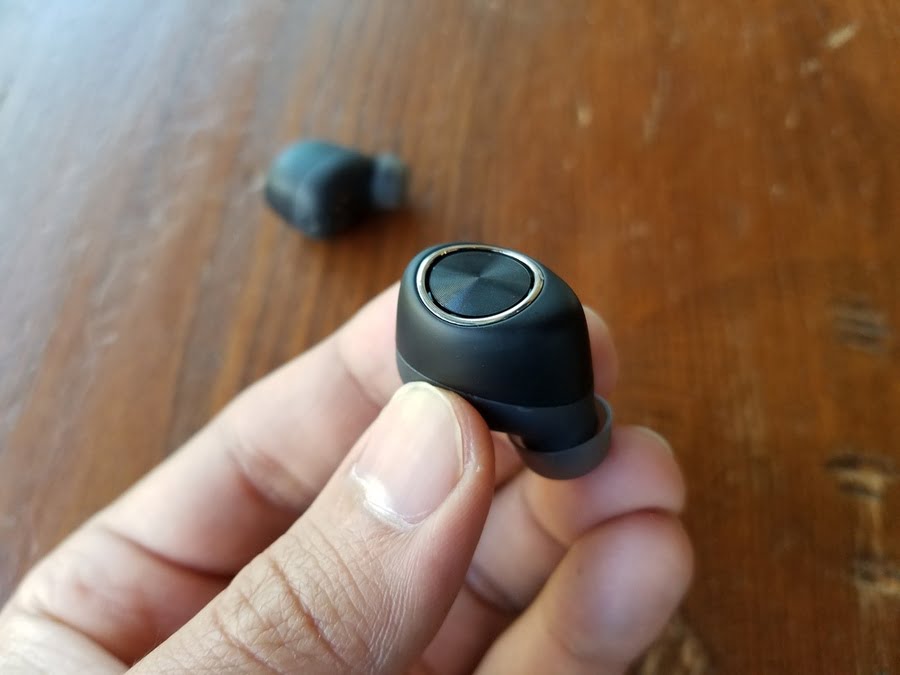
You actually can’t change the volume from the earpieces. It can only be done through a mobile device. The only playback controls you get with the button are play/pause (single press) and next/previous track (double/triple presses). Motorola also thought about incoming calls. A dual-microphone system allows you to effortlessly take calls, and you can toggle voice command functions through your mobile device (Apple’s Siri or Android’s Google Now).
It’s important to know that the carrying case doesn’t just hold and charge the VerveOnes, but it has its own battery. So you can keep the earbuds charged up even on the go. And the case’s battery can be charged separately, like a power bank. That said, you’d be correct to expect that the earbuds have a lackluster playtime from full to empty, at only about 3 hours. There’s just only so much space in the earpieces for a battery. The case’s battery pack is Motorola’s mitigation for this concern, in which there’s enough for 4 full charges. So not taking into account the charging time, that equates to about 12 hours of playback.
The Bluetooth range is at a healthy 33 feet. But we must mention that we observed the right earpiece cut off at times. We couldn’t figure out what caused it. When it happened, it would struggle to regain a stable connection. We figured out that pausing and restarting the music would fix the issue, so it was just a minor annoyance.
Sound
Audio enthusiasts may not expect much audio prowess from such an ambitious earbud or from a company that doesn’t have much of an audio portfolio, but the VerveOnes do come with the promise of “deep, rich HD sound”. To that, I’d say it depends on what your preference is. As an audiophile, I’m not overly impressed. Despite being on the “balanced” setting (Motorola provides 6 different EQ profile options), the spectrum is overtaken by a warm, bassy presence. And speaking of which, the bass’ bloated nature makes for a muddiness that significantly takes away from the promise of “HD” reproduction.
It’s not all bad, though. The mid-to-high frequencies come through equally as well. I appreciated that the vocals are realistic and that the mid-range didn’t just feel 2-D. Although the perceived soundstage isn’t very wide, the sounds fill out the space that they have quite nicely. The detail captured in the treble region is sufficient, but the drivers can’t grab those upper frequencies.
It’s honestly hard to recommend the VerveOnes from an audio perspective. I just feel like $199 should get you clearer and better-defined sound quality. Then there’s also the issue of hiss. All true wireless earbuds seem to suffer from noticeable background hiss, and the VerveOnes is no exception. The music can drown it out, but it’ll rear its head around when the audio gets silent.
Final Thoughts
Like most of the completely wireless earbuds on the market right now, the VerveOnes is also a mixed bag. Although, we must keep in mind that this concept is new territory. First-gen devices are never perfect. That said, Motorola did a few things excellently. We loved how simple and efficient the carrying case is, and how easy it is to use the earbuds. We weren’t too impressed with the audio quality, but if you mostly care about the convenience, then the $199 price tag isn’t too shabby.
Related Articles:
